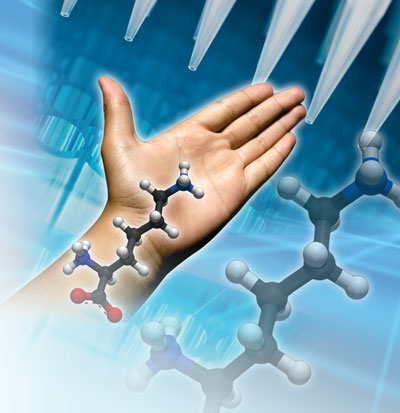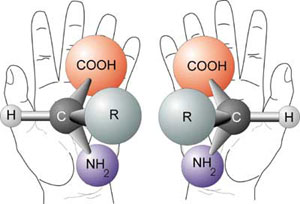
Interview with “peptide chemist” Ken Funk Ph.D.
Dr Ken Funk attended Moody Bible Institute and graduated from Houghton College (New York State) as a chemistry major, zoology minor and then from Case-Western Reserve University (CWRU-Ohio) with both masters and doctorate degrees in organic chemistry. He is the owner of three patents and has been published in peer-reviewed scientific journals. Although Ken started his thesis back in 1967, studies were deferred from 1969–72 due to his service in the US Navy during the Vietnam War.
Dr Ken Funk worked for over 28 years as a process development chemist at a major pharmaceutical company in the area of peptide chemistry. So what is a peptide?
The basic building blocks of much of the machinery that all life requires are called amino acids, of which there are 20 different ones in the human body.3 endometriosis,4 and uterine fibroids5.
Changing of the culture

Ken has been a Christian since responding at a Billy Graham Crusade in 1957. For most of his adult life, he has been an active witness for the Lord and serves in his local church. He recalls that in the early days of his career the subject of ‘science’ being at odds with the Bible was not discussed as much as it is today. He attributes this to the very strong Christian culture that permeated American society decades ago. The work he and his fellow scientists were engaged in involved “day-to-day experimental science, so discussion about origins or evolution rarely came up.” Except, he says, when a world-renowned peptide chemist he studied under, the late Miklos Bodanszky, told him, “Evolution could not have happened by chance but I am unwilling to invoke a god.” Ken says, “This is tragically like many today who willfully reject the clear evidence of God’s design in nature. Today, evolution and its deep time foundation is being taught as fact, and used as a justification to dismiss the Bible’s authority. The undermining of Genesis has had a dramatic effect on evangelical people’s confidence in Scripture and their witnessing. Most Christians are intimidated by their own inability in answering issues that evolution and its millions of years have raised in their own minds. Also, by not teaching the Bible as real history, the church is failing to equip believers in this critical area.”
Ken is frustrated that so many church leaders sit on the fence with regard to the age of the earth. He notes, “They don’t realize that the concept of millions of years totally undermines the credibility of Genesis, and thus the rest of Scripture and the Gospel, by putting eons of death and destruction before Adam and his Fall. It is especially sad that scientists who support biblical authority get so little support from today’s theologians.”
Active in evangelism
This realization has given Ken new-found zeal to spread the Good News. Although retired since 2002, he is active as men’s ministry facilitator at his local church. And as a member of its evangelism ministry team, he is keen to teach others how to use creation arguments in their witnessing.
Stumbling block for evolution

Ken also has developed a creation talk in his area of speciality, called “God is left-handed”. This catchy phrase refers to the ‘chirality problem’ for evolution. Ken explained that during the time of his graduate research, the Miller–Urey experiment was the prize ‘proof’ for evolutionists that life could somehow spontaneously arise from a primordial chemical soup.
In 1953 graduate student Stanley Miller conducted experiments based on Harold Urey’s proposals about the necessary environmental conditions for life to arise by chance on a primordial Earth billions of years ago (often referred to as ‘chemical evolution’). It involved an electrical discharge through a mixture of gases in a flask, and produced some amino acids. But the major product of the experiment (about 85 percent by volume) was a noxious mixture of tarry substances poisonous to life, while the amino acids were only about 0.9 percent of the total volume. He says, “Much work was going on at the time to develop variations of this experiment, but without success.”
The chirality problem
Moreover, the amino acids produced were in any case what is known as a racemic (50:50) mixture of left and right-handed forms, whereas all living plants and animals can only use left-handed amino acids to make proteins. (Left and right hand refers to the fact that the amino acids, though chemically identical in their ability to form peptides, are mirror images of one another, like our left and right hands. An exception is the simplest amino acid, glycine.) If amino acids of the wrong type are included in the chain during manufacture, life’s proteins cannot fold properly into the shapes needed to function. Life therefore requires what is known as an ‘optically pure’ supply of solely left-handed amino acids, whereas chemistry by itself, following the laws of chance, will always produce a racemic mixture. Moreover, all sugars in DNA and RNA must be ‘right-handed’, otherwise the vital informational double helix could not form.
References and notes
View All
Related Articles
- Origin of life: the chirality problem
- Origin of life and the homochirality problem: is magnetochiral dichroism the solution?
- Mirror, mirror on the wall—which is the strangest theory of all?
- Shaking hands on a recent creation
- An awesome mind
- Panspermia theory burned to a crisp: bacteria couldn’t survive on meteorite
- Getting the Word out
- Dr Jonathan D. Sarfati B.Sc. (Hons.), Ph.D., F.M.
- Manipulating life?
- Did God create life?
- The Miller–Urey experiment revisited
- The force of probability arguments

